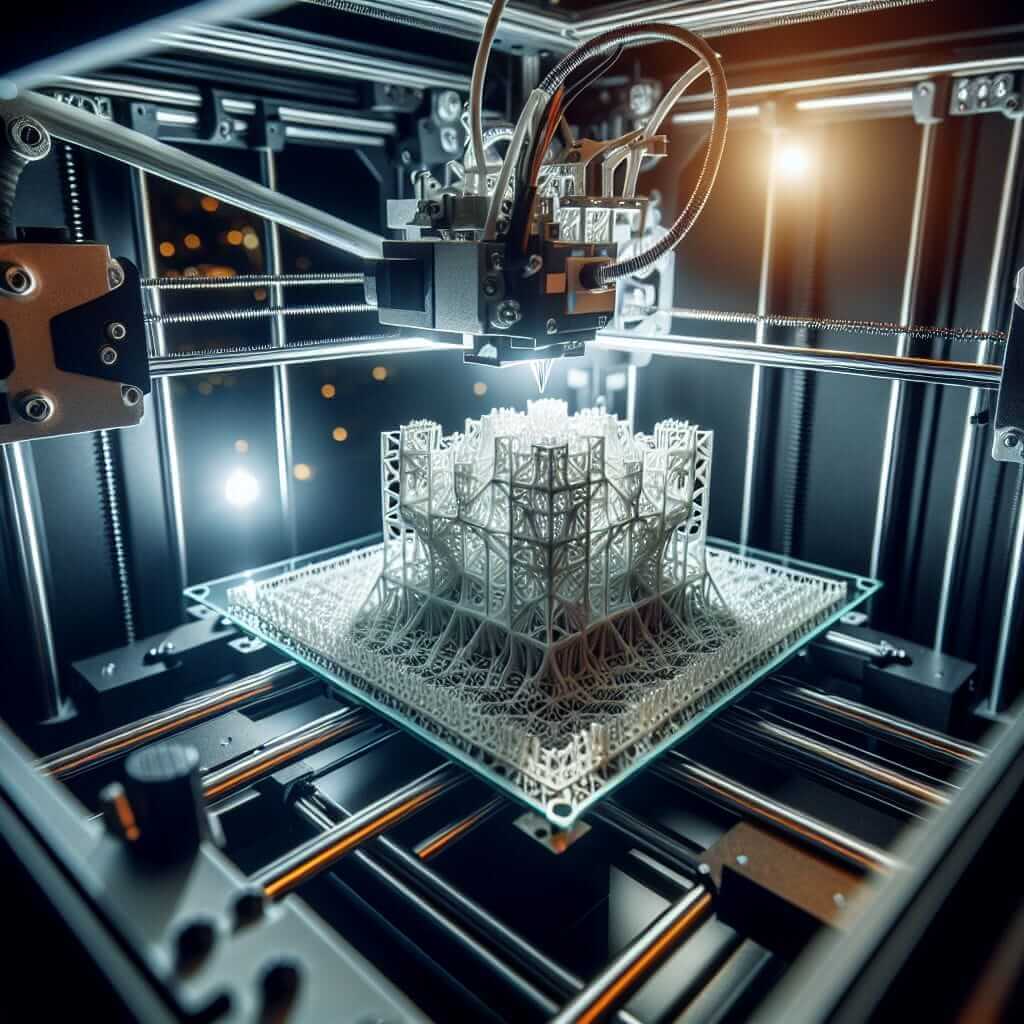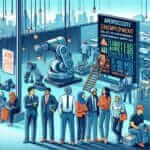The IELTS Reading section is a test of comprehension, vocabulary, and analytical skills. Candidates are required to read passages and answer questions based on their understanding. The topic of 3D printing in manufacturing is becoming increasingly relevant given the technological advancements and its potential to transform industries. In this article, we’ll delve into this fascinating subject, providing a comprehensive reading passage followed by questions and detailed answers that imitate the structure and difficulty level of real IELTS Reading tests. This content will also be enriched with vocabulary and grammar insights to help you excel in your exam.
Reading Passage
The Impacts of 3D Printing on Manufacturing
3D printing, also known as additive manufacturing, has revolutionized the manufacturing industry. Traditionally, manufacturing involved subtractive processes, where materials were removed to create the desired product. In contrast, 3D printing builds objects layer by layer, offering numerous benefits and transforming various sectors.
One significant impact of 3D printing in manufacturing is customization. Unlike traditional methods, 3D printing allows for the creation of tailored products. This is particularly beneficial in industries such as healthcare, where bespoke medical implants and prosthetics can be created to fit individual patients perfectly. Moreover, industries like fashion and jewelry are exploring 3D printing for personalized designs, leading to a surge in consumer satisfaction.
Another advantage is rapid prototyping. Before the advent of 3D printing, developing a prototype was time-consuming and expensive. Engineers and designers can now quickly produce prototypes, test them, and make necessary adjustments. This accelerates the innovation process and reduces costs, making manufacturing more efficient and responsive to market demands.
3D printing also has a profound impact on supply chain management. Traditional manufacturing often requires shipping bulk materials and finished products across long distances, leading to increased costs and carbon emissions. With 3D printing, production can be localized, thus reducing the need for extensive logistics. This not only cuts down on transportation costs but also minimizes the environmental footprint of manufacturing activities.
Furthermore, 3D printing promotes sustainable manufacturing. It generates less waste compared to traditional techniques, as it uses only the necessary amount of material for each part. Additionally, 3D printers can utilize recycled materials, contributing to a circular economy. This aspect of 3D printing aligns with global sustainability goals, making it a preferred choice for environmentally conscious manufacturers.
However, despite the advantages, 3D printing faces several challenges. Material limitations remain a significant hurdle. While plastics and certain metals can be used, more robust and diverse materials are needed for broader application. Additionally, the initial investment in 3D printing technology can be high, which may deter some businesses from adopting it.
In conclusion, 3D printing holds transformative potential for the manufacturing industry. Its ability to customize products, speed up prototyping, improve supply chain efficiency, and promote sustainability highlights its importance. Nevertheless, overcoming material limitations and high upfront costs will be critical for its widespread adoption.
Questions
Multiple Choice
-
According to the passage, what is one major benefit of 3D printing in healthcare?
- A) Reduced costs
- B) Faster production times
- C) Customization of medical implants and prosthetics
- D) General manufacturing of tools
-
How does 3D printing contribute to sustainable manufacturing?
- A) By reducing production times
- B) By minimizing waste and using recycled materials
- C) By increasing consumer satisfaction
- D) By lowering initial investment costs
True/False/Not Given
-
3D printing allows for the mass production of identical items at lower costs.
-
3D printing has completely eliminated the need for traditional manufacturing methods.
Summary Completion
Complete the summary using the list of words A-F below.
3D printing has brought significant changes, including rapid prototyping and improved __ (5), allowing for quicker adjustments and reduced costs. However, challenges such as __ (6) limitations and high initial investments need to be addressed for broader application.
A) supply chain
B) personalization
C) customization
D) material
E) transportation
F) labor
Answer Key
-
C) Customization of medical implants and prosthetics
- Explanation: The passage explicitly states the benefit of customization in healthcare, particularly for medical implants and prosthetics.
-
B) By minimizing waste and using recycled materials
- Explanation: The passage highlights how 3D printing generates less waste and can utilize recycled materials, promoting sustainable manufacturing.
-
Not Given
- Explanation: The passage does not mention mass production of identical items specifically.
-
False
- Explanation: The passage acknowledges that 3D printing offers many benefits but does not state that it has completely eliminated traditional manufacturing methods.
Summary Completion
-
A) supply chain
- Explanation: The improved supply chain efficiency is highlighted in the passage as a key impact of 3D printing.
-
D) material
- Explanation: Material limitations are mentioned as one of the significant challenges facing 3D printing in manufacturing.
Common Errors and Tips
- Misunderstanding the Main Idea: Ensure you fully understand the passage’s main argument or point before attempting the questions.
- Skimming and Scanning: Use these techniques to find key information quickly. Skim for the general idea and scan for specific details.
- Vocabulary Knowledge: Familiarize yourself with industry-specific terminology and general academic vocabulary.
- Practice: Regular practice with similar passages is crucial for improving speed and accuracy.
Vocabulary
- Revolutionized (v.): To completely change something so that it is much better.
- Customization (n.): Making or altering something to fit individual needs.
- Prototyping (n.): The process of creating a model or sample of a product.
- Localized (adj.): Restricted to a particular place.
- Sustainability (n.): The ability to maintain or continue a process or state indefinitely.
- Circular economy (n.): An economic system aimed at eliminating waste and the continual use of resources.
Grammar Focus
- Passive Voice: “3D printing has been revolutionized…” – Use passive voice to focus on the action rather than who performed it.
- Contrast Structures: “Unlike traditional methods, 3D printing allows for…” – Use phrases that show contrast to compare different ideas or methods.
Advice for High Reading Scores
- Active Reading: Engage with the text by making annotations, summarizing paragraphs, and predicting content.
- Understanding Question Types: Familiarize yourself with different question types (e.g., True/False/Not Given, Multiple Choice).
- Time Management: Allocate your time wisely to ensure you can answer all questions without rushing.
 3D Printing Machine
3D Printing Machine
By focusing on these strategies and practicing with targeted materials, you can significantly improve your reading skills and excel in the IELTS Reading section.


